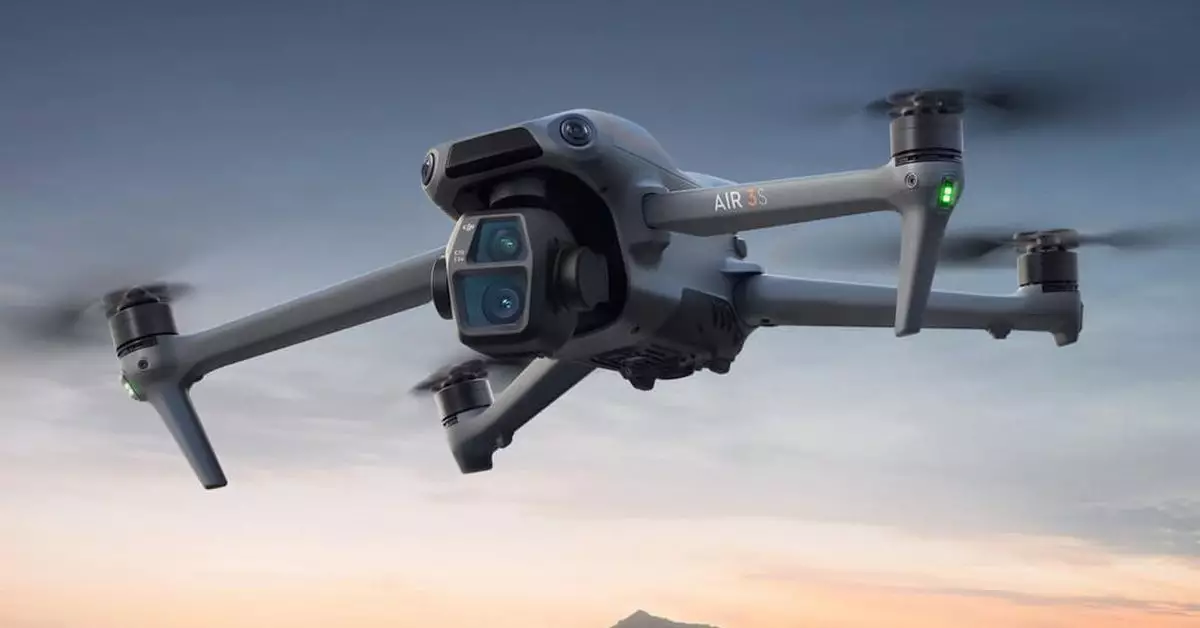The dynamic landscape of drone technology continues to evolve as companies like DJI, a leading manufacturer of civilian drones, grapple with regulatory challenges that impact their market presence in the United States. This article delves into the import restrictions facing DJI, the implications of U.S. legislation, and the broader context of international trade and security concerns.
DJI’s recent announcement regarding its flagship consumer drone, the Air 3S, has stirred conversations across tech and consumer electronics sectors. Due to import challenges attributed to U.S. regulatory scrutiny, DJI announced that this newest model would not be made available through retail channels. This situation is not a blanket ban but is part of a larger framework of the Department of Homeland Security’s ongoing examination of products sourced from China, especially drones.
In detailing the situation, DJI referenced the Uyghur Forced Labor Prevention Act (UFLPA) as a pivotal factor in the scrutiny of its imports. According to the company, U.S. Customs and Border Protection has used this act to justify halting some drone imports. Despite DJI’s insistence that it does not engage in forced labor and manufactures its drones wholly in Shenzhen or Malaysia, the regulatory measures highlight a growing wariness towards foreign products, especially those with ties to regions under scrutiny for human rights abuses.
As the fog of regulatory hurdles thickens, DJI has taken steps to clarify its commitment to ethical production practices. The company has categorically denied utilizing forced labor in its supply chain and is working to present substantiating documentation to U.S. Customs. This self-advocacy points to a pressing need for transparency in supply chains, especially for multinational corporations facing increasing distrust from governments and consumers alike.
The importance of this transparency cannot be overstated. In a climate where misinformation can spiral rapidly, asserting compliance with both U.S. laws and international standards is crucial for companies wishing to sustain their market share. The emphasis on documentation not only serves legal purposes but also fosters trust with stakeholders, including consumers who may be deterred by negative narratives surrounding a brand.
In the legislative arena, the situation surrounding DJI is further complicated by attempts in Congress to place stricter bans on drones manufactured by the company. Previous legislative moves aimed at prohibiting DJI drones have surfaced in the U.S. House of Representatives, yet these proposals must navigate the complexities of Senate approval. Recent developments suggest that while a complete ban was initially proposed, it has faced roadblocks, indicating the messy nature of legislative processes.
Furthermore, DJI’s inclusion on the Department of Commerce’s Entity List due to allegations of surveillance collaboration with the Chinese government adds another layer of complexity. For drone makers and importers, these lists serve as critical barriers that can hinder international sales and distribution channels, therefore influencing consumer access and choice.
The implications of these regulatory challenges extend beyond just DJI. Should Congress finalize bans on DJI drones, existing consumers would likely continue using their devices, albeit without future access to repairs, upgrades, or new models from the manufacturer without significant regulatory changes. Moreover, such actions could stifle innovation and limit consumer choices which might inadvertently bolster domestic competitors or lead to increased prices in the drone market.
For manufacturers, navigating this regulatory landscape will require agility, investment in compliance infrastructure, and robust advocacy strategies to engage with government stakeholders. The ongoing scrutiny of foreign entities by U.S. authorities underscores the broader geopolitical tensions that shape consumer products and their availability.
DJI’s experiences epitomize the complexities facing international businesses in an increasingly protectionist global economy. The intersection of technology, regulation, and international relations is fraught with challenges that require vigilance, transparency, and strategic compliance. As consumers continue to demand advanced drone technology, the push-pull of regulatory hurdles could reshape the identity of the drone industry within the United States. The final outcome of these disputes remains uncertain, but one thing is clear: the aviation of tomorrow must navigate the turbulent skies of today’s political and regulatory challenges.


Leave a Reply